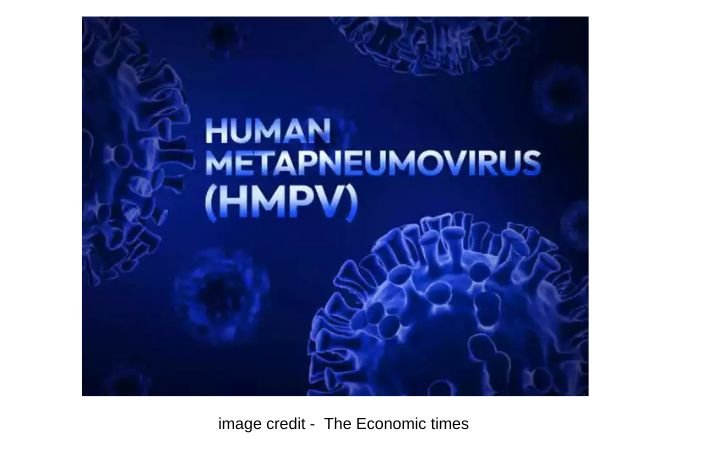Human metapneumovirus (HMPV) is a respiratory virus that has been attracting growing attention from the medical community due to its possible cause of significant respiratory diseases. Though lesser known than some viruses such as influenza or respiratory syncytial virus (RSV), HMPV still has a considerable threat level, especially in vulnerable populations. This article covers what HMPV is, what symptoms are involved, how the virus is spread, the risk it carries, how to prevent infections, and how infections can be controlled.
What is Human Metapneumovirus?
The Paramyxoviridae family, which also includes viruses like RSV and parainfluenza, includes the human metapneumovirus. It was first identified in 2001 in the Netherlands, but since then, it has been identified worldwide and is now known to be a significant cause of respiratory illness in both children and adults.
The respiratory tract is mainly affected by HMPV. Symptoms vary, including the spectrum from the relatively mild upper respiratory infections to serious lower respiratory illnesses such as pneumonia and bronchitis. It has been seasonal; infections peak at late winter or early spring time.
How Is HMPV Transmitted?
HMPV is spread by respiratory droplets when an infected person coughs, sneezes, or talks. It can also be spread by contact with contaminated surfaces or objects followed by touching the nose, mouth, or eyes. The closer one is to an infected individual, the higher the chances of getting infected, making environments such as daycare centers, nursing homes, and hospitals risky for outbreaks.
The incubation period for HMPV is about 4 to 6 days, which means that symptoms can start appearing a few days after exposure. The virus remains contagious for several days after the symptoms have disappeared, which complicates efforts to contain its spread.
Symptoms of Human Metapneumovirus
HMPV can cause a wide range of respiratory symptoms, from mild to severe. The severity of symptoms usually depends on the age of the patient, the general health of the patient, and the strength of the patient’s immune system. Common symptoms of HMPV infection include:
Mild Symptoms
- Runny or stuffy nose
- Cough
- Sore throat
- Fever
- Fatigue
- Hoarseness
Severe Symptoms
In more severe cases, especially in high-risk individuals, HMPV can cause:
- Bronchitis: Inflammation of the bronchial tubes, leading to coughing and mucus production.
- Pneumonia: An infection of the lungs that often produces symptoms such as labored breathing, a feeling of chest pain, and a persistent cough.
- Wheezing: An inflammation that creates a resistance to airflow and may be accompanied by a whistling sound produced during exhalation.
- Shortness of breath: An inability to breathe and may be fatal in severe cases.
High-Risk Populations for Severe HMPV
Although HMPV can infect anyone regardless of age, some populations are more susceptible to severe disease.
1. Infants and Young Children
HMPV is one of the major causes of respiratory infections in children under 5 years of age. It causes bronchiolitis, which is an inflammation of the small airways in the lungs, and it makes it hard for the child to breathe. Children with pre-existing conditions, such as asthma or congenital heart disease, are at a higher risk of complications.
2. Older Adults
The immune system of the individual weakens as age advances; thus, elderly adults are more prone to severe HMPV infections. In aged patients, HMPV can make underlying conditions, such as chronic obstructive pulmonary disease (COPD) and heart disease, worse, and therefore, can require hospitalization.
3. People with Compromised Immunity
Severe HMPV infections are also experienced in people with already compromised immune systems. These people include individuals undergoing chemotherapy, organ transplant recipients, and those suffering from HIV/AIDS. Their bodies may not be capable of fighting the virus for a prolonged period and thus increasing the chances of complications.
4. People with Chronic Illness
People with chronic respiratory conditions, such as asthma, COPD, or interstitial lung disease, are more susceptible to HMPV infections. The virus may exacerbate these conditions, making respiratory symptoms and complications worse.
Complications of Human Metapneumovirus
Most people with HMPV recover without any complications. However, in vulnerable individuals, the virus may cause severe health complications. Common complications include:
1. Bronchiolitis
Bronchiolitis is the other common complication that is seen in infants and young children infected with HMPV. It contributes to inflammation and congestion in the bronchioles of the lungs, which it leads to problems such as breathing, wheezing, and coughing.
2. Pneumonia
Pneumonia is a potentially life-threatening complication that occurs when the virus infects the lungs. It can cause symptoms such as fever, chest pain, difficulty breathing, and fatigue. In severe cases, pneumonia may require hospitalization and oxygen therapy.
3. Asthma Exacerbation
HMPV can trigger asthma attacks in individuals with pre-existing asthma. The virus-induced inflammation can worsen asthma symptoms, leading to wheezing, shortness of breath, and the need for emergency medical care.
4. Secondary Infections
Individuals with HMPV may be at risk of secondary bacterial infections, for example, ear infections or bacterial pneumonia. Such infections can add complexity to the course of recovery and will necessitate antibiotic therapy.
Diagnosis of Human Metapneumovirus
Diagnosing HMPV is often difficult because symptoms resemble those caused by other respiratory viruses, such as influenza, RSV, and COVID-19. To diagnose HMPV, healthcare providers can utilize the following techniques:
Physical Exam
The physician will note the patient’s signs and listen to their lungs to identify the presence of respiratory distress.
Nasopharyngeal Swab
A nasopharyngeal swab sample is collected from the patient’s nose or throat. It is analyzed in the laboratory to detect HMPV by polymerase chain reaction testing.
Chest X-ray
In cases that become severe, chest X-ray might be ordered to rule out the presence of pneumonia or lung infections.
Human Metapneumovirus Treatment
There is no specific antiviral treatment for HMPV. Management is symptomatic and aimed at preventing complications. Treatment includes the following:
Rest and Hydration
Ensuring the patient gets plenty of rest and stays hydrated to help the body recover.
Over-the-Counter Medications
Medications like acetaminophen or ibuprofen can help reduce fever and relieve pain.
Bronchodilators
In cases of wheezing or asthma exacerbation, bronchodilators may be prescribed to help open the airways.
Oxygen Therapy
In severe cases, patients may require supplemental oxygen to maintain adequate oxygen levels.
Hospitalization may be necessary for individuals with severe symptoms, especially those with pneumonia or breathing difficulties.
Prevention of Human Metapneumovirus
Preventing the spread of HMPV involves the same measures used to prevent other respiratory viruses. Key prevention strategies include:
1. Hand Hygiene
Washing your hands often with soap and water for at least 20 seconds can minimize the chances of infection. Hand sanitizer containing a high percentage of alcohol is also effective when soap and water are not accessible.
2. Avoid Close Contact
Avoid close contact with people who are sick, especially if you are in a high-risk group. Keep away from people showing symptoms of respiratory illness.
3. Clean and Disinfect Surfaces
Wash frequently used surfaces, for example, door handles, handrails, or light switches; or electronic devices that are frequently handled, with appropriate disinfectant regularly to limit the spread.
4. Don Masks in Areas of High-Risk
While wearing a mask in crowded, high-risk situations, such as hospitals or long-term care settings, can decrease the spread of HMPV.
5. Stay Home When Ill
In case you have the symptoms of respiratory infection, keep away from public places to avoid transmitting the virus to other people. This is a significant measure that can help curb the outbreak in the community.
Conclusion
Human metapneumovirus is a very important cause of respiratory illness that should not be overlooked. Although many people have minor symptoms and recover with no complications, HMPV is a huge risk to babies, elderly people, and immunocompromised people. Understanding the symptoms, risks, and prevention strategies may help reduce the effects of HMPV and keep vulnerable populations away from severe disease. As studies on HMPV continue to evolve, better awareness and timely intervention will play a crucial role in managing this potentially dangerous virus.










